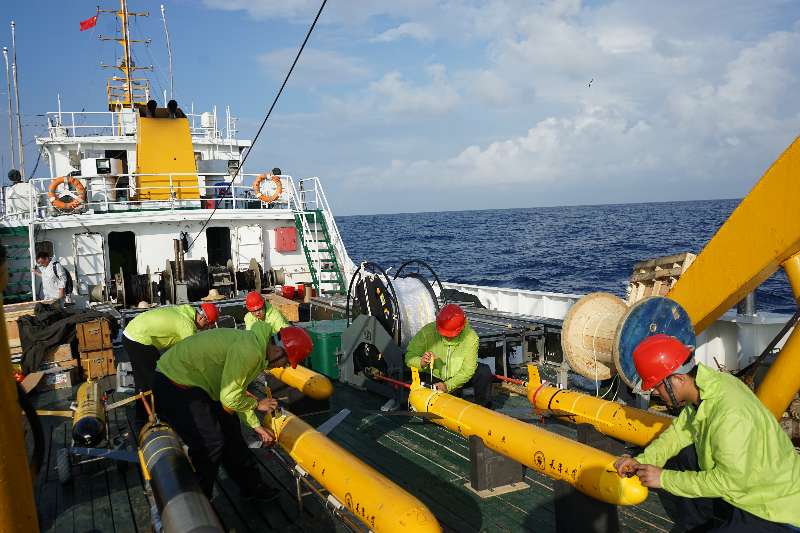Tianjin University Underwater Glider “Petrel” Helping the World’s Largest Mesoscale Eddy Observation Project

After its successful launch, the underwater glider called “Petrel” helped accomplish the task of constructing a comprehensive stereoscopic observation network of marine “mesoscale eddies”. This task, completed on August 8, 2017 and conducted in the northern South China Sea over 300 km of the coast, was one of the longest, covered more area and used more types of equipment in the world. It covered 140,000 square kilometers of sea from the “atmosphere-seawater interface” to a depth of 4200-meters. More than 30 sets of innovative marine equipment were involved in this phase of the task, including the underwater glider “Petrel” developed by Tianjin University. These marine equipment were all developed in China, demonstrating Chinese research and development ability and the high standard of marine observation equipment. The survey, by utilizing these advanced equipment to build a comprehensive stereoscopic observation network, indicates that China has developed a global advanced study on constructing a network for deep sea observation, which is a significant milestone in the regional marine observation.
The observation was organized and conducted jointly by Joint Laboratory of Qingdao National Laboratory for Marine Science and Technology (QNLM)-Tianjin University and the Ocean University of China. The R&D equipment used in this task was jointly developed by the 710th Research Institute of China Shipbuilding Industry Corporation, Xi'an Institute of Optics and Precision Mechanics, the Chinese Academy of Sciences, Zhongshan University, Fudan University and Guangdong Ocean University. The equipment included the underwater gliders “Petrel”, wave gliders, submerged buoys for comprehensive surveying, a fiber optic hydrophone array, C-Argo buoys, an underwater vehicle (AUV) and over 30 sets of other advanced equipment for marine observation. Different from the previous stand-alone and single-platform observation, this observation used different kinds of equipment mentioned above, conducting multi-parametric comprehensive, stereoscopic and collaborative network observation and survey, which was China's first implementation of collaborative observation combining multiple types of on-water and underwater mobile and fixed-point apparatus, effectively improving the ability and level of marine observation and data acquisition of our country.
“In the networking observation, ‘Petrel’ played a core role”, observed Wang Shuxin, Vice President of Tianjin University and Chief Scientist of the Joint Laboratory for Marine Observation and Detection, QNML. He said: “Compared with traditional marine equipment, ‘Petrel’ can conduct serial section observations carrying many kinds of sensors like temperature and salinity, marine biochemistry, turbulence, and current profilers. Its advantages in data acquisition were highlighted. At the same time, the continuous running of ‘Petrel’ exceeded one month and for over 1000 kilometers. Moreover, it has high maneuverability and an ability to continuously track eddies, which is far beyond the reach of previous fixed observations.”
There are countless large and small eddies in the ocean, the most widespread being the “mesoscale eddy”. It is an ocean eddy with a diameter of hundreds of kilometers, having an important impact on the surrounding marine climate and marine environment. Recently, satellite images showed the emergence of a mesoscale eddy in the northern South China Sea. The sci-tech workers from QNLM seized this rare opportunity, carrying out three-dimensional and all-round tracking observation by using a digital trunk system. It was reported that the northern South China Sea is one of the areas with the most abundant marine multi-scale eddies in the world. The “interaction and energy cascade” between these eddies are scientific problems at the cutting-edge of international physical oceanography.
Editors: Yin Shiyu and Ross Colquhoun

